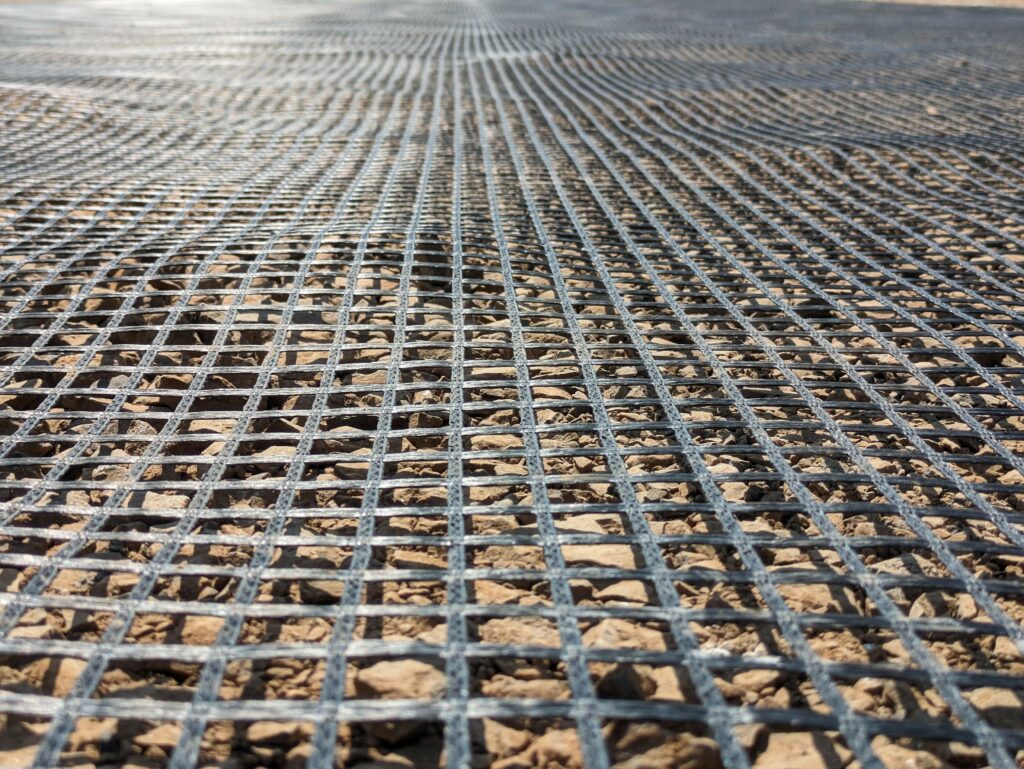Uniaxial geogrid
What is uniaxial geogrid?
Uniaxial geogrids are a kind of geosynthetic material having reinforcing ribs that are mostly oriented in one direction. They have extra strength and stiffness in this particular direction, which makes them very useful for numerous soil reinforcement purposes. These grids can be manufactured from materials like Polyethylene geogrid or, most commonly used to stabilize soil, enhance load dispersion, and increase the lifetime of infrastructure.
Benefits of uniaxial geogrid
Enhanced soil reinforcement
By strengthening the tensile strength of the soil, uniaxial geogrids greatly improve soil reinforcement. The interaction between the soil particles and the geogrids enhances the capacity of the soil to bear load making it suitable for various types of civil engineering work. This is important as such works need stable soils that can withstand high loads for example roads, building surfaces, dams, or embankment-supporting structures among others.
Improved load distribution
Uniaxial geogrids are renowned for their ability to improve the load distribution. This prevents structural failures as it redistributes point loads thereby covering them with a large area. The even distribution of load helps in avoiding local heavy loads hence making the structure secure and durable. For instance, this improved load distribution helps make roads and foundations more durable by reducing problems such as rutting and cracking which will lead to low maintenance costs.

Erosion control
Slope stabilization and prevention of soil erosion by water or wind are among the ways that uniaxial geogrids perform their role in erosion control. These geogrids lock up with soil preventing its movement hence reducing the chances of landslides and other forms of erosion. This will also contribute to the longevity and safety of infrastructure projects.
Long-term durability
Another major advantage is uniaxial geogrid’s long-term durability. Constructed from high-quality geosynthetic materials, these grids are resistant to chemical and biological degradation, hence applicable in different environmental conditions. They possess significantly higher tensile strength and therefore have an extended lifespan that eliminates constant repairs as well as replacement needs.
Applications of uniaxial geogrids
Road infrastructure
The road infrastructure is one of the most common places you will find uniaxial geogrids, whose main purpose is to provide a strong foundation and also prevent problems like rutting and cracking. These geogrids boost the overall performance of pavements by enhancing the ability of any one highway section to carry loads, reduce differential settlements, and make them last longer. This application is particularly useful where soils are weak or unstable.
Retaining walls
Retaining walls cannot do without uniaxial geogrids in their construction as they provide necessary reinforcement which enhances wall stability and improves their load-bearing capacity. It allows designs to be more efficient by reducing material usage and simplifying construction methods leading to economies in costs and increased durability. To check out how Strata used uniaxial geogrids in retaining walls, please check out our case study.
Slope stabilization
Slope stabilization is an important use for uniaxial geogrids. They are applicable in mountainous areas as well as urban centers because they keep slopes from falling apart thereby maintaining slopes with embankments. Instead, these devices help ensure that slopes remain stable into the future such that both natural landscapes as well as built infrastructure can be protected when natural disasters strike.
Foundation support
Foundations’ bearing capacity can be enhanced using uniaxial geogrids. This is particularly important in high-rise building projects where a stable foundation is crucial for safety. These geogrids strengthen weak foundation soils and provide the support needed to construct houses, commercial buildings, etc.
Strength of uniaxial geogrids
Tensile strength
The tensile strength of uniaxial geogrids is a critical property. Measured usually in kN/m, their tensile strength is high enough to give the necessary massive and strong backup to several types of construction projects. Depending on the kind and quality of materials used such as high-density polyethylene or polypropylene, proper installation, and environmental factors among others, these geogrids maintain different strengths.
Variables that affect tensile strength
The following factors determine how well uniaxial geogrids operate and their tensile strength.
- Material Type and Quality: Different levels of strength and durability are offered by high-density polyethylene or polypropylene.
- Installation Procedures: The geogrid’s efficiency is highly dependent on proper installation.
- Environmental Conditions: Exposure to chemicals, temperature variations, and UV light can affect the geogrid’s performance.
By optimizing these factors, engineers can ensure that uniaxial geogrids deliver optimal performance for their intended applications.
If you are looking to strengthen your infrastructure projects with reliable and durable uniaxial geogrids, contact Strata Global today. We offer top-quality geosynthetic solutions tailored to your needs. Whether it’s for road construction, retaining walls, slope stabilization, or foundation support, our expert team is here to help.
